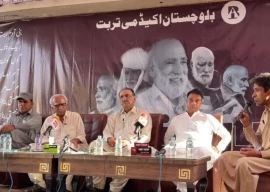About ten years ago, Pakistan had about 30% stand-by electricity. But ever since then, the country has been facing a power crisis that has – or has the potential – to cripple the economy. The country has faced other such crises since 1974, but none were as severe as this.
Load-shedding has become a routine factor across the country and 8-16 hours is no longer considered an anomaly. The effect on the economy and especially on exports is something that might not be seen right away, but the impact will be severe in coming months as trade figures are revealed.

For many years, transmission and distribution were considered to be the biggest problems. But now, inadequate power generation itself is the biggest factor. From 1970 to the early 1990s, the supply of electricity was unable to keep pace with demand that was growing consistently at 9-10% per annum. In the early 1990s, the peak demand exceeded supply capability by about 15-25%, necessitating load shedding of about 1,500 - 2,000 MW. The present average short fall in the supply demand gap is between 4,500-6,500 MW.

The power crisis has led to multiple factors that have had a negative impact on economic growth. The circular debt and the rising cost of power (due to imbalanced generation mix) are the main factors hampering the national economy. The acute power shortages (ranging from 6 to 16 hours of load-shedding in both urban and rural areas) is forcing the industrial sector to work at under-production level and threatens badly the export performance besides creating social as well as law and order problems in the country.
The final straw has been the month-long power shutdown announced for the textile industry in Punjab, the heartland of the textile cartels and responsible for generating a significant percentage of Pakistan’s exports.

The stance taken by the government appears to be rational. The government says that it has only shut down power to those industries which have captive power generation capacity, and those which are related to processing, for example weaving, dying or spinning. The government says that it has not shut down power to value added industries, which – and they are right here – is the value-added chain which has the potential to earn more foreign exchange for the country.
Very magnanimous, or so it would seem, but there are just two problems here which the government seems to have missed. The first is the reduction, and in most cases almost non-available gas supply to the industrial areas of Punjab. Most, if not all captive power generation is designed to run on gas, which is no longer as freely available as it was a few years ago. The textile lobby refuses to generate power using furnace oil saying that it affects their ability to keep costs low and stay competitive in the international market. This may or may not be a valid rationale but it is certainly a factor that the government should have taken into account.
The second issue with the policy of shutting down power to the processing sector is that this is primarily a source for the value added sector. By shutting this sector down, the government has effectively crippled the value-added textile sector.
Failing to keep up
Political wrangling over power projects, the inability to generate adequate financing and the lack of support from international donors for projects subject to international disputes has crippled Pakistan. There are many who say that it is not a coincidence that the power to industrial units in Punjab has been cut. It is a PML-N stronghold and they are in the opposition.
Published in The Express Tribune, December 31st, 2012.
Like Business on Facebook to stay informed and join in the conversation.

















COMMENTS
Comments are moderated and generally will be posted if they are on-topic and not abusive.
For more information, please see our Comments FAQ